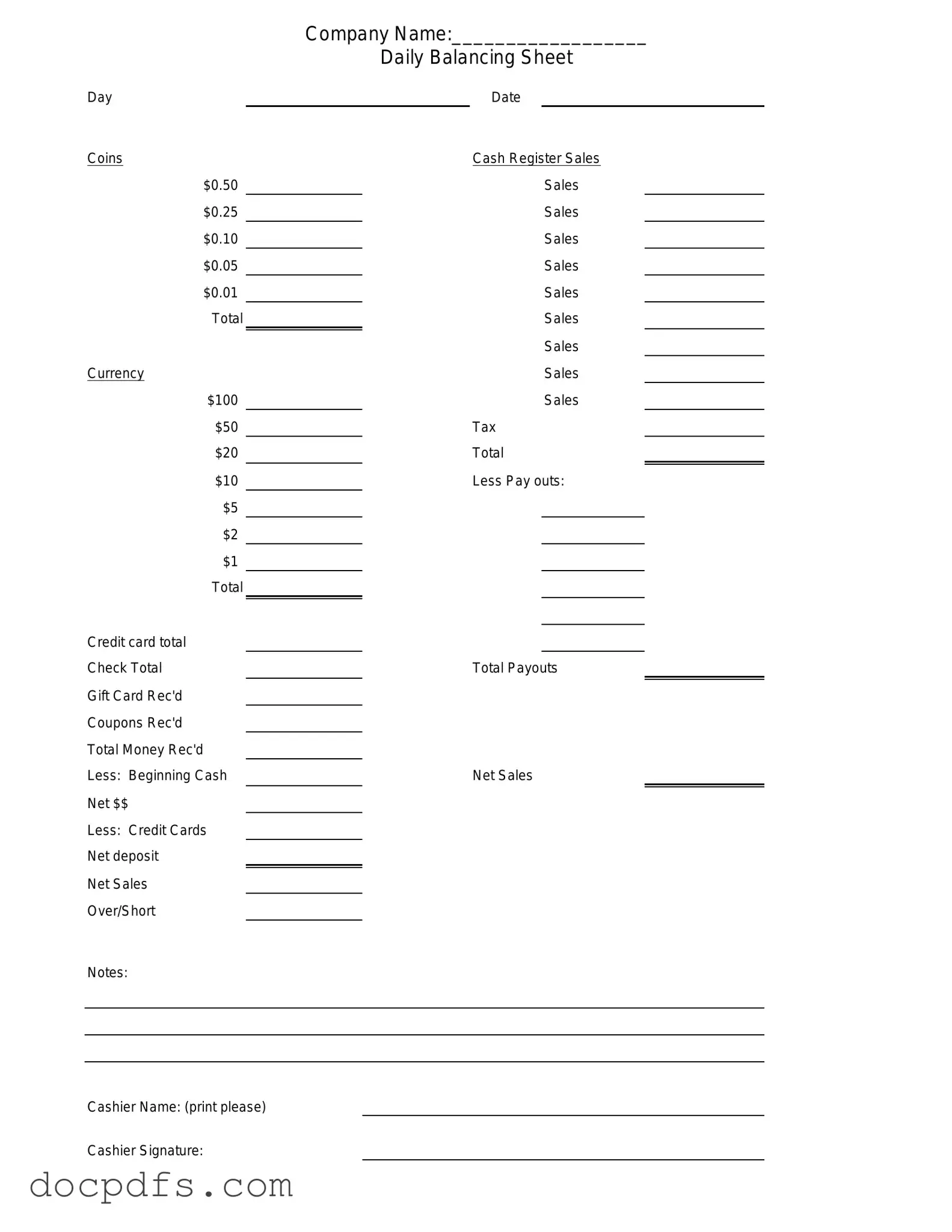The Cash Drawer Count Sheet form plays a crucial role in the financial management of businesses, particularly those that handle cash transactions. This essential tool helps employees accurately record the amount of cash in the drawer at the beginning and end of each shift, ensuring accountability and transparency. By documenting the cash count, businesses can easily identify discrepancies, track sales, and maintain proper financial records. The form typically includes sections for listing denominations of bills and coins, as well as spaces for signatures and dates, which enhance the reliability of the information provided. Furthermore, using this form can streamline the cash handling process, making it easier for managers to oversee operations and for auditors to conduct reviews. Overall, the Cash Drawer Count Sheet is not just a simple document; it serves as a foundational element in safeguarding a business's financial integrity.
